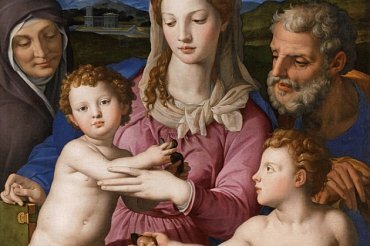Art in Florence between XVI and XVII centuries: Pure, Simple and Natural

Up to November 2, the Uffizi Gallery in Florence will host the exhibition "Pure simple and natural. Art in Florence between XVI and XVII centuries", the result of a thorough critical-scientific study on Florentine painting of that period led by academics Claudio Giannotti and Alessandra Pizzorusso.
On display there are 72 works, including paintings and sculptures, frescoes, pottery and more, some of which have been specially restored for this occasion.The exhibition is organized into five chronological sections and four thematic areas.
Masterpieces by artists like Andrea della Robbia, Andrea del Sarto, Santi di Tito, Jacopo da Empoli, Ottaviano Vannini, Bronzino and Andrea Commodi are shown with the aim of subverting the common idea of a Florentine culture exclusively oriented toward the past, revealing on this occasion a drive towards novelty also in the artistic line that, at the turn of the XV and XVII centuries - while remaining faithful to its models - brought to light the "new tradition".
Giorgio Vasari praised in fact the "modern manner" as the overcoming of the fifteenth-century tradition, focusing his attention on Leonardo, Michelangelo and Raphael, but also on Fra 'Bartolomeo and Andrea del Sarto, who, together with Andrea Sansovino and Andrea della Robbia, were in the XV century the founders of an orderly "modern manner", then affirmed with Franciabigio, Bugiardini and Sogliani. Then, overcoming generations of Bronzino and Alessandro Allori, we arrive at "the countertrend XVII century", in which we find artists who have taken this Florentine 'purist' identity to get away from Caravaggio and the Baroque: from Santi di Tito to Jacopo da Empoli, from Ottavio Vannini to Lorenzo Lippi.
Returning to the exhibition, at the entrance we find the Annunciations by Andrea della Robbia, Andrea del Sarto, S anti Tito and Jacopo da Empoli.Then there's a room dedicated to still-life drawing with works by Andrea del Sarto, Pontormo and others.From the mid-XVII century the artists are brought together by themes: paintings for the home, paintings of things and tradition of the sacred.
Through different elements, there is an effective comparison between painting and sculpture divided into nine sections that group together works by 35 artists in a very measured setting, with a careful and stric eye on control of colors.











